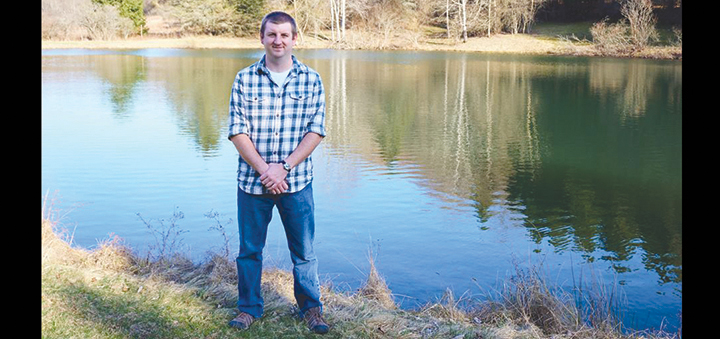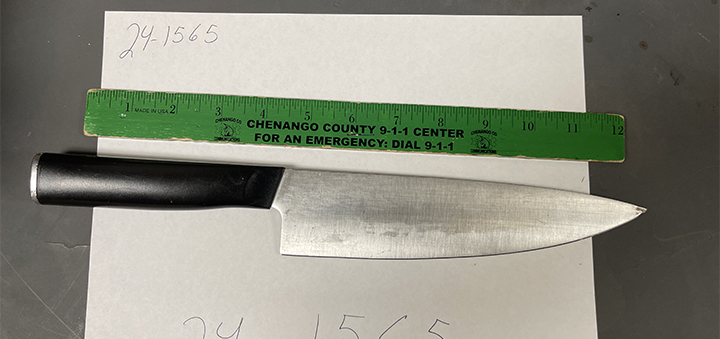Ground Blind Maintenance And Repair
Published:
April 6th, 2022
By:
Eric Davis

In 2018, I had trail camera pictures of deer going by the pond to cross a fence where I hunt. Due to the lack of trees within bow range, I couldn’t put up a treestand so I settled for a ground blind tucked under the low canopy of a couple apple trees. I spent a couple hours loading the brush-straps on the exterior of the blind to help it disappear under the trees.
For weeks after putting the blind up, I continued to get pictures of deer going right by almost every morning. Finally, in the last weeks of archery season, I was ready to sit in my blind and hopefully harvest a big doe as she headed back to the bedding area. As I approached the blind, I could tell something was wrong. We had gotten a few inches of snow that week and the weight on the roof of the blind caused it to collapse. When it did this, two of the side walls also folded in, causing some of the fiberglass rods to snap.
I ended up going to another stand for the morning sit and returned a few hours later to try to take care of it. It took me half an hour to get enough snow off from it that I could kind of fold it up and drag it down to the garage. I tied up the different hub centers so that the snow and ice that was still on the blind could melt off because the blind wouldn’t stand on its own with the broken support rods on two sides.
I got online and investigated replacement parts direct from the manufacturer. I could order a hub with all 4 support poles for $49.99 a piece, and I needed 3. I would have to spend more on the replacements than I spent on the blind itself! After voicing my frustration to a friend, he told me about something he read online about using fiberglass fenceposts to replace the support rods on some models of ground blinds. After hearing this, I got online myself and researched the topic.
The method seemed simple; buy fenceposts of the same diameter as the support rods, measure how long a good support rod was, cut the fencepost to that length, and pop the fencepost into the rod holders. I waited until the spring of 2019 to work on my blind as the garage wasn’t heated and the blind material had frozen down to the ground. Here are the steps I took to rehab my blind:
1. Identify what hub had the broken pole or poles.
2. Remove the hub assembly from the blind using socket wrench. Set all bolts, washers, and nuts aside.
3. Cut the broken pole flush with the end of the sleeve that is cabled to the hub.
4. Put the sleeve into a bench vise and tighten the vise.
5. Use a 3/8” drill bit to remove the end of the pole from the sleeve. Go for about one inch.
6. Clean out shavings in the sleeve.
7. Put the blunt end of the fence post into the sleeve and make sure it stays snug.
8. Hold the fencepost up to another pole with the ends of their sleeves even, mark the fencepost to match the end of the pole, cut the fencepost.
9. Put hub assembly back together and put the pole ends into their pockets. Test opening and closing hub a few times.
10. If hub holds up to test, put a few drops of superglue into the sleeve where the fencepost is put in.
Once I had replaced all the rods I needed to, I brought the blind outside and set it up in the yard to make sure everything functioned as it should. I put the blind into its carrying case and waited until the Youth Tukey Hunt that spring to test it out. We used the blind on Saturday of the hunt and had no issues setting it up or taking it back down.
After doing some additional research on problem of blind roofs caving in under the weight of heavy snow, I have found some ways to help avoid this problem. Some people buy telescoping handles used for changing lightbulbs on high ceiling or for attaching to paint rollers. Make sure it goes to the height of the center of your blind when the blind is set up.
When you are done hunting for the day, simply put the rod up to the hub in the ceiling of the blind and put the bottom on a large rock or a small chunk of scrap lumber so the rod doesn’t sink into the ground. This will support the roof in the event of a heavy snow. Others just make their own support from scrap lumber or PVC pipe. Then when you return the next time to hunt, just take the support down while you hunt as long as the roof isn’t covered with a lot of snow.
Author: Eric Davis - More From This Author
Comments







